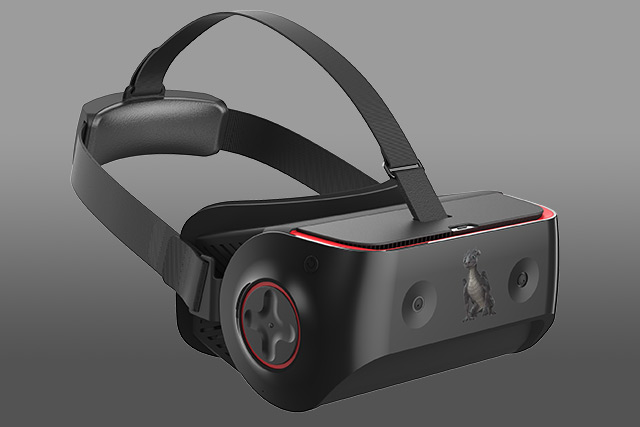
To date, the most impressive mobile virtual reality headset we’ve gotten our hands on is the Samsung Gear VR. It’s a great piece of equipment, but lacks a lot of the features that can be found on higher-end, PC-based VR headsets like the Oculus Rift and HTC Vive. That’s not the case with Qualcomm’s dev kit though, which in many ways leapfrogs its competitors to give us a glimpse of the future.
The Qualcomm VRDK comes with a single 2,560 x 1,440 display, split across both eyes and paired up the Snapdragon 835 processor with 4GB of LPDDR4 RAM and 64GB of onboard flash memory. It also supports Wi-Fi, Bluetooth, and USB 3.1 Type-C connections and has a built-in trackpad for user inputs.
However, it’s the sensor set-up which is so impressive on the Qualcomm head-mounted display (HMD). It features a pair of front-mounted, monochromatic, one-megapixel cameras with fisheye lenses, which give the headset inside-out tracking. That is, in conjunction with the onboard gyroscope and accelerometer, it can tell where you are in the real world and translate your six degrees of motion into the virtual equivalent.
Taking things a step further, Qualcomm also announced that it had partnered with Leap Motion to integrate its hand-tracking technology into the VRDK. That means that users will be able to see and utilize their hands in VR games and experiences. While it lacks the inputs and tactile feedback of motion controllers, Leap trackers have proved to be an affordable way to add hand-interaction in digital experiences (thanks AndroidCentral).
Qualcomm’s VRDK is capable of tracking your eyes, too, using a pair of monochromatic shutter cameras on the inside of the headset. They let the software adjust what you see based on where you’re looking, which in turn makes foveated rendering possible. Although still a fledgling technology, it has the potential to make massive savings on required power for certain games and experience, which should enable higher-end visuals on the mobile platform.
All of this is backed up by Qualcomm’s own software developer kit, which gives software makers deep access to the CPU, GPU, and power and performance management, making it easier to achieve stable frame rates and comfort for the VR user.
At this point, the only feature holding back Qualcomm’s developer kit from making the Vive and Rift look obsolete is its reliance on the on-board Snapdragon processor. While powerful in its own right, it’s unlikely to be anywhere near as capable as a high-end gaming PC, and so it can’t hope to deliver the same kind of visual experience as PC-based virtual reality.
Everything else though is a generational leap ahead of the mainstream VR headsets revealed in April 2016, and suggests that 2017 and beyond is going to see huge leaps in the functionality and quality of virtual reality hardware.
Unfortunately for those looking for a release date, Qualcomm isn’t planning on selling this developer kit to the public. It’s going out to software developers and hardware partners, the latter of whom will use it as a base to build their own designs upon. The headsets will start shipping out to partners in the second quarter of this year, though visitors to the Games Developer Conference and Mobile World Conference shows will get to see a demonstration of the technology later this month.




